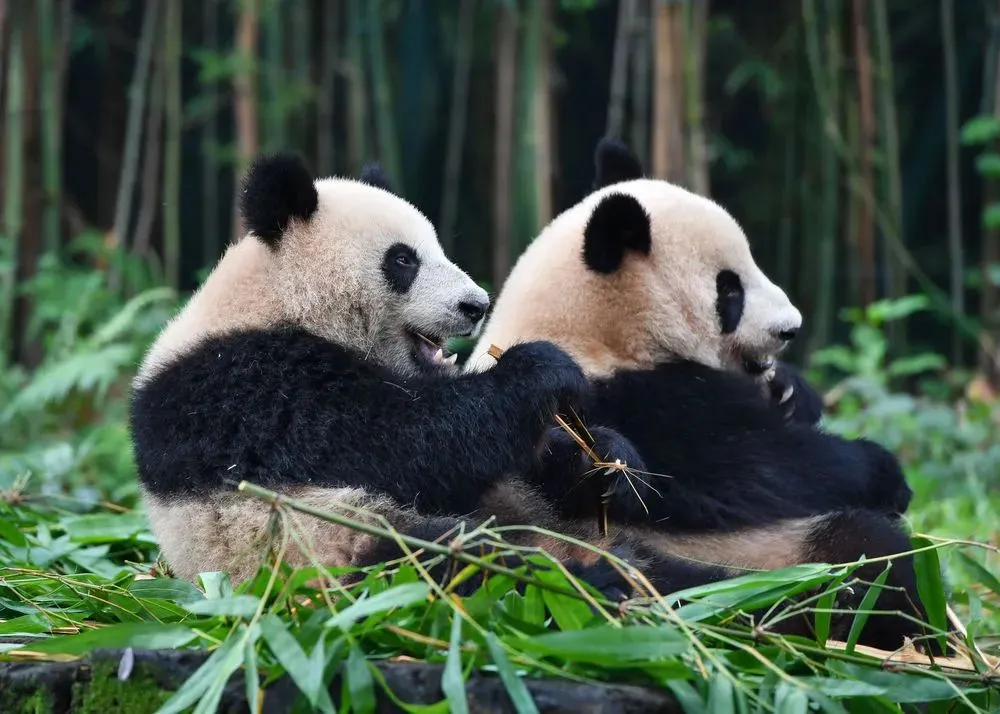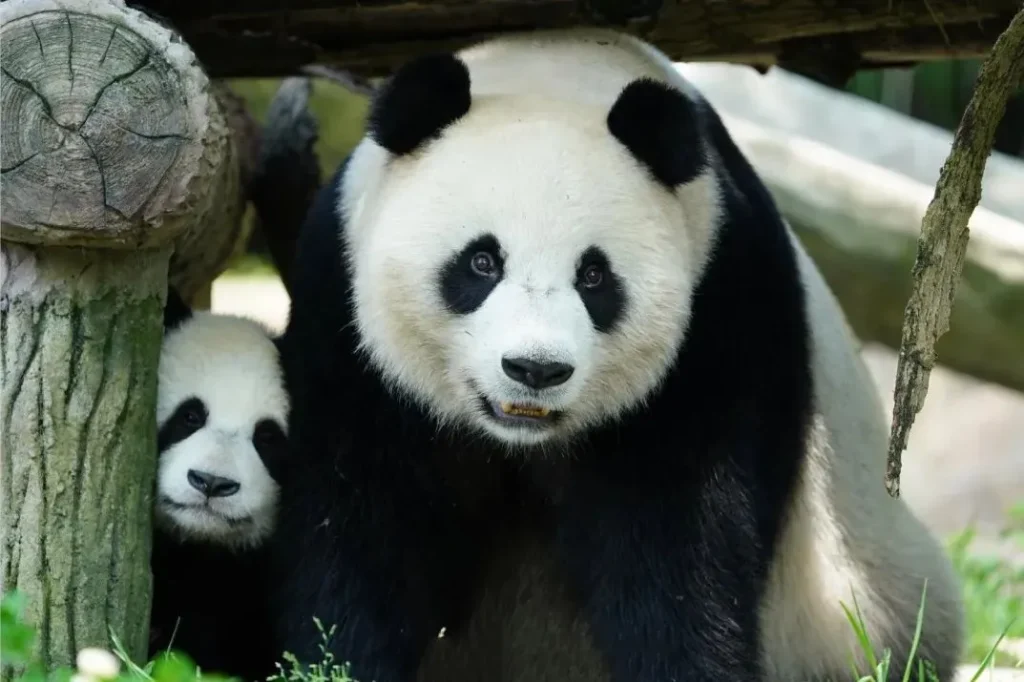
Destinations
This is your gateway to discovering China’s beauty! Whether it’s your first visit or a deeper exploration, we’ve got you covered.
Sichuan
Sichuan (四川), nestled in Southwest China, is a real treasure trove, captivating visitors from around the globe with its stunning landscapes, rich history, and unique way of life. It’s a place that truly feels like a “poem and distant land,” offering diverse China tours and experiences. Many travelers consider it one of the best places to visit in China.

1. Nature’s Extremes: From Snowy Peaks to Fertile Plains

Sichuan’s geography is incredibly diverse, a key highlight for any China tour. It stretches from the high Tibetan Plateau and Hengduan Mountains (横断山脉) in the west down to the fertile Sichuan Basin in the east. This dramatic drop in elevation – over 7,000 meters! – creates everything from snow-capped Chinese mountains and glaciers to deep gorges, lush forests, vast grasslands, and sparkling lakes. You’ve got Mount Gongga (贡嘎山), the “King of Sichuan Mountains” soaring to 7,556 meters in the west, and the vast, fertile Chengdu Plain (成都平原), known as the “Land of Abundance” (天府之国), in the east. The China climate here is just as varied – from the humid subtropics around Chengdu to the chilly highlands of Western Sichuan (川西高原) and the sunny Panxi Rift Valley (攀西裂谷). This means there’s always a good time to visit, no matter the season, making it a fantastic addition to China beautiful places to explore.
2. Layers of History and Culture

Sichuan is one of the cradles of Chinese civilization, a must-see for those interested in China history. Mysterious bronze wares and gold masks unearthed at Sanxingdui (三星堆) and Jinsha (金沙) sites reveal a brilliant ancient Shu culture (古蜀文明) dating back over 4,000 years. Tales from the Three Kingdoms period (like those remembered at Chengdu’s Wuhou Shrine – 武侯祠) and unique Ba-Shu (巴蜀) customs, such as Sichuan Opera (川剧) with its amazing face-changing acts and the ubiquitous teahouse culture (茶馆文化), are still very much alive today. Sichuan is also home to many ethnic groups; 14 different groups like the Tibetans (藏族), Qiang (羌族), and Yi (彝族) have lived here for generations, blending their cultures to create unique festivals (like the Torch Festival – 火把节), architecture (like the distinctive Qiang watchtowers – 羌族碉楼), and religious art (like Tibetan Buddhist Thangkas – 唐卡). You might even find a Chinese temple or two showcasing this rich heritage.
3. The “An’yi” Lifestyle and Food Heaven

Sichuanese people are famous for their relaxed “An’yi” (安逸) attitude towards life. You can feel it in century-old teahouses like Heming (鹤鸣茶社), where locals leisurely sip covered-bowl tea (盖碗茶) and play chess. And of course, there’s the food! Sichuan food (川菜), a highlight of Chinese cuisine, has conquered taste buds worldwide with its signature “Ma La Xian Xiang” (麻辣鲜香) – numbing, spicy, fresh, and fragrant flavors. Fiery hot pot (火锅), Mapo Tofu (麻婆豆腐), Dan Dan Noodles (担担面) – these aren’t just dishes; they’re cultural icons. This vibrant food scene, featuring some of the China famous food, combined with the laid-back pace of life, lets visitors truly immerse themselves in the local culture. Don’t miss trying Chengdu food specifically when you’re in the capital.
4. Home of Pandas and Ecological Wonders

As a global biodiversity hotspot, Sichuan is famously the homeland of the Giant Panda (大熊猫), a true China national treasure. It has the largest wild panda population in China. You can get up close (but not too close!) to these adorable “living fossils” and capture amazing panda pictures at places like the Wolong Nature Reserve (卧龙自然保护区) or the Chengdu Research Base of Giant Panda Breeding (成都大熊猫繁育研究基地), often referred to as the Chengdu Panda base. Beyond pandas, the western Sichuan plateau is teeming with rare plants and animals, and ecosystems like the Zoige Wetland (若尔盖湿地) offer incredible opportunities for eco-tourism and exploring China nature.
5. Easy Travel and Sustainable Growth

The ancient saying “Shu Dao Nan” (蜀道难), meaning “the roads to Shu are hard to travel,” is definitely a thing of the past. Modern Sichuan boasts an extensive transportation network: 17 airports (including the major Chengdu Tianfu International Airport – 成都天府机场, airport code TFU), over 10,000 km of highways, and a high-speed rail system connecting attractions across the province, making China tours much more accessible. While developing tourism, Sichuan is also focused on blending culture and travel responsibly and protecting its environment through smart tourism platforms and conservation efforts. Many China travel packages now highlight these sustainable options.
Sichuan’s charm lies in its incredible diversity – it truly is a “province of a thousand faces.” China nature and culture intertwine, tradition meets modernity. Whether you’re searching for ancient secrets, exploring breathtaking China landscapes, or simply soaking up the relaxed, everyday atmosphere, Sichuan offers a deep and rewarding experience that will likely exceed all your expectations. It’s undoubtedly one of the most beautiful places in China and a top pick for things to do in China.
Recommended Attractions and Activities:
Awesome Nature Spots
Jiuzhaigou (九寨沟)
- This place is famous for its super colorful lakes, waterfalls, and stunning mountain views.
- It’s a UNESCO World Heritage site and a top-rated (5A) tourist spot. Think pristine nature, lots of cool and rare animals and plants, and a unique Tibetan culture vibe.
- Key spots to check out: The “Three Gullies and Four Peaks” (Shuangqiao Gully (双桥沟), Changping Gully (长坪沟), Haizi Gully (海子沟); and Yaomei Peak (幺妹峰), San’guniang Mountain (三姑娘山), Er’guniang Mountain (二姑娘山), Da’guniang Mountain (大姑娘山)).
Mount Emei (峨眉山)
- Known for its breathtaking natural beauty and Buddhist temples. It’s a big deal – a UNESCO World Cultural and Natural Heritage site and a 5A tourist spot. It’s also one of the Four Sacred Buddhist Mountains in China.
- You’ll find famous temples like Wannian Temple (万年寺) and Fuhu Temple (伏虎寺). The scenery changes with the seasons: rhododendrons in spring, seas of clouds in summer, colorful leaves in autumn, and snowy landscapes in winter.
Mount Qingcheng (青城山)
- A sacred Taoist mountain, famous for its natural beauty and historical importance.
- It’s a UNESCO World Heritage site and a 5A tourist spot, and one of the birthplaces of Taoism in China. Don’t miss famous Taoist temples like Tianshi Cave (天师洞) and Shangqing Palace (上清宫).
Huanglong (黄龙 Scenic Area)
- People love this spot for its hot springs, colorful pools, and amazing natural scenery.
- Another UNESCO World Heritage site and 5A tourist spot, known for its incredible travertine landscapes (those cool mineral deposits), unique colorful pools, and ancient forests.
- Must-sees: The three main travertine features (slopes, pillars, and pagodas), the “three wonders” (colorful pools, snow-capped mountains, and forests), and three major travertine formations.
Mount Mengding (蒙顶山)
- Famous for its tea and beautiful natural views.
Shunan Bamboo Sea (蜀南竹海)
- Known for its vast bamboo forests and stunning natural beauty.
Bashan Grand Canyon (巴山大峡谷)
- Famous for its spectacular canyons and gorgeous natural scenery.
Xiling Snow Mountain (西岭雪山)
- Great for skiing and enjoying beautiful snowy mountain views.
Longmen Mountain (龙门山)
- A natural scenic area known for its beautiful landscapes.
Luding Hailuogou Glacier Forest Park (泸定海螺沟冰川森林公园)
- Known for its glaciers, hot springs, and incredible natural beauty.
History and Culture Buffs, This Way!
Dujiangyan (都江堰)
- An ancient irrigation system that’s a UNESCO World Heritage site and a 5A tourist spot. It was built way back in 256 BC and, get this, it’s still in use today!
- It’s a testament to the smarts of ancient Chinese workers. Key parts of its design include the “Yuzui” Fish Mouth Levee (分水鱼嘴), the “Feishayan” Spillway (飞沙堰), and the “Baopingkou” Water Inlet (宝瓶口).
Leshan Giant Buddha (乐山大佛)
- The world’s largest stone-carved Buddha statue and a 5A tourist spot. It’s carved right into the mountainside and stands a whopping 71 meters tall.
Langzhong Ancient Town (阆中古城)
- A beautifully preserved ancient town with a lot of history.
Jianmen Pass (剑门关)
- A historic mountain pass that was super important strategically.
Beichuan Qiang City Tourist Area (北川羌城旅游区)
- A great place to explore the culture and history of the Qiang people.
Sanxingdui Museum (三星堆遗址) (Sanxingdui Ruins)
- A museum showcasing ancient artifacts. It’s a key site of the ancient Shu civilization, a national key cultural relic protection unit, and dates back 3,000 to 5,000 years.
- They’ve unearthed tons of precious relics, like bronze masks, bronze figures, a bronze sacred tree, and gold masks.
Wuhou Shrine (武侯祠)
- A temple dedicated to Zhuge Liang, the chancellor of the Shu Han state during the Three Kingdoms period. It’s a national key cultural relic protection unit and is right next to the Han Zhaolie Temple (汉昭烈庙) (Liu Bei’s tomb).
Du Fu Thatched Cottage (杜甫草堂)
- The former home of the Tang Dynasty poet Du Fu when he lived in Chengdu. It’s a really important spot in Chinese literary history. Inside, you’ll find the Gongbu Shrine (工部祠) and a replica of his thatched cottage.
Qingyang Palace (青羊宫) (Green Ram Palace)
- A Taoist temple with a rich history.
Wenshu Monastery (文殊院)
- A famous Buddhist temple in downtown Chengdu, originally built during the Tang Dynasty. It’s one of the best-preserved ancient architectural complexes in the city.
Mount Emei Museum (峨眉山博物馆) (Included within Mount Emei)
- A museum all about the history and culture of Mount Emei.
Cool Cultural Experiences
Jinli (锦里) (Jinli Pedestrian Street)
- A historic street in Chengdu, packed with culture and amazing food. It’s right next to Wuhou Shrine and is a super charming, old-style commercial street.
- You can find all sorts of Sichuan specialty snacks here, and the architecture is really traditional and elegant.
Kuanzhai Alleys (宽窄巷子) (Wide and Narrow Alleys)
- A famous spot in Chengdu that blends history with modern charm. These are ancient streets from the Qing Dynasty, made up of Wide Alley (宽巷子), Narrow Alley (窄巷子), and Well Alley (井巷子).
- It’s full of Chengdu’s courtyard culture and that laid-back vibe, with all kinds of cool little shops and tasty food.
People’s Park (人民公园)
- A park in the heart of Chengdu, great for culture and chilling out. It was first built in 1911 and has teahouses, stages for performances, and more.
Chunxi Road (春熙路)
- The go-to area in Chengdu for shopping and food.
Wangjianglou Park (望江楼公园) (River-Viewing Pavilion Park)
- A park in central Chengdu with both cultural significance and beautiful natural scenery.
Chengdu Research Base of Giant Panda Breeding (成都大熊猫繁育研究基地) (includes Panda Valley (熊猫谷))
- Get up close and personal with giant pandas! This is one of the world’s largest panda conservation and research centers.
- Panda Valley, located in Dujiangyan City, is a key part of it.
Sichuan Opera Performance (川剧表演)
- Traditional Sichuan opera is a must-see, with its unique music, dance, and acrobatics. A good place to catch a show is the Jinjiang Theater (锦江剧院) in Chengdu.
Teahouse Experience (茶馆体验)
- Chengdu’s teahouses have a long history. Experience Sichuan’s Gaiwan tea (盖碗茶) and the local lifestyle. Try some jasmine tea at a century-old teahouse!
Intangible Cultural Heritage Experience (非物质文化遗产体验)
- Visit the Sichuan Intangible Cultural Heritage Exhibition Center to experience traditional music, dance, drama, and more.
Foodie Adventures and Shopping Sprees
Food Streets/Shopping Areas
- Jinli (锦里): Chengdu’s awesome food street (see more under Cultural Experiences).
- Chunxi Road (春熙路): The spot for shopping and eating in Chengdu (see more under Cultural Experiences).
- Kuanzhai Alleys (宽窄巷子): Full of cool shops and delicious food (see more under Cultural Experiences).
- Chengdu Taikoo Li (成都太古里): A unique shopping street that mixes traditional Western Sichuan-style buildings with modern shops. You’ll find trendy brands and great food here.
Recommended Restaurants
- Shu Jiuxiang Hotpot (蜀九香火锅): For a top-notch hotpot experience in Chengdu.
- Longsenyuan Hotpot (龙森园火锅): Another great choice for amazing hotpot in Chengdu.
- Chengdu Huangcheng Laoma (成都皇城老妈): A well-known hotpot place in Chengdu.
- Lao Ma Tou Hotpot (老码头火锅店): Known for fresh, plentiful ingredients and rich, flavorful broths.
Must-Try Local Dishes
- Chengdu: Hotpot (火锅), Chuanchuanxiang (串串香) (lots of stalls in Jinli Ancient Street), Dan Dan Noodles (担担面) (you can find them in Jinli), Fuqi Feipian (夫妻肺片) (also available in Jinli).
- Leshan (乐山): Sweet Skin Duck (甜皮鸭), Fish Hotpot (鱼火锅).
- Yibin (宜宾): Ran Mian (燃面) (Burning Noodles), Jiang’an Cured Meats (江安烧腊).
- Zigong (自贡): Zigong Salt Gang Cuisine (盐帮菜), Zigong Shaomai (自贡烧麦) (steamed dumplings).
For the Adventurous Souls
- Hiking: Places like Mount Emei (峨眉山) and Mount Qingcheng (青城山) are known for their beautiful scenery and challenging trails.
- Rafting: Hongkou Rafting (虹口漂流) and Bailu River Rafting (白鹿河漂流) offer thrilling water adventures.
- Rock Climbing: The mountainous areas of Sichuan are famous for their steep cliffs and challenging climbs.
- Cycling: Routes like the Sichuan-Tibet Highway (川藏线) and the Western Sichuan Loop (川西环线) offer incredibly scenic rides.
Relax and Unwind
- Huashuiwan Hot Springs (花水湾温泉): A hot spring resort in Dujiangyan.
- Other Hot Springs and Spas: Plenty of places offering relaxation and spa treatments.
- People’s Park (人民公园) (also a Cultural Experience): A key spot for Chengdu locals to relax and have fun, and a great place to experience tea culture.